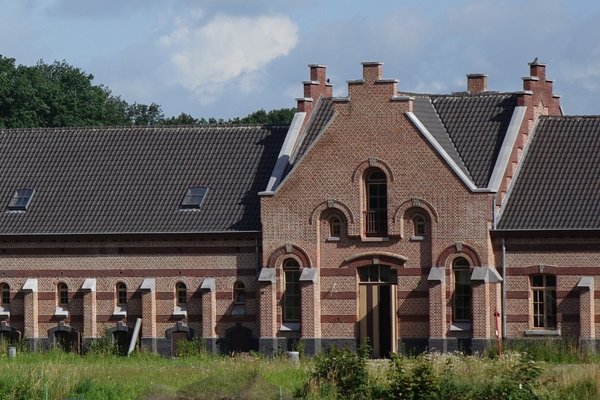Belgium, Netherlands
Colonies of Benevolence
The Colonies of Benevolence comprise a relict cultural landscape of isolated peat and heath wastelands that were colonized in the 19th century in a model for pauper relief.
As part of an Enlightenment experiment (lasting from 1818 to 1918), agricultural colonies were founded in rural areas to transform the colonists into ideal citizens and make the land productive. There were free colonies, founded by the Society of Benevolence to help poor citizens, and unfree colonies, where people were sent by the State and had to live under a stricter regime.
Community Perspective: “If you’re looking for perfect photo opportunities, this is not the site for you.” Expect to see farmland, rural school buildings and small protestant churches. For a quick visit, Frederiksoord-Wilhelminaoord may be the best bet with its recent (2019) visitor center. Brendan visited all three components and his review even comes with hiking and drinking recommendations! And Clyde almost ended up imprisoned…
Site Info
Official Information
- Full Name
- Colonies of Benevolence (ID: 1555)
- Countries
- Belgium Netherlands
- Status
-
Inscribed 2021
Site history
History of Colonies of Benevolence
- 2021: Revision
- Revised proposal after Referral in 2018. From 5 to 3 locations in NL, dropping Ommerschans and Willemsoord. From 2 to 1 locations in Belgium, dropping Merksplas.
- 2021: Inscribed
- Inscribed
- 2018: Referred
- 2018: Advisory Body overruled
- ICOMOS advised Deferral, overturned by Brazil amendment
- 2015: Revision
- Transboundary with Belgium, after being on the Dutch T List since 2011
- Type
- Cultural
- Criteria
- ii
- iv
Links
- UNESCO
- whc.unesco.org
- Official
-
- kolonienvanweldadigheid.eu — Official nomination website (which also includes the deleted locations)
All Links
UNESCO.org
- whc.unesco.org — whc.unesco.org/
Official Website
- kolonienvanweldadigheid.eu — Official nomination website (which also includes the deleted locations)
Community Information
- Community Category
- Secular structure: Civic and Public Works
- Cultural Landscape: Clearly defined
Travel Information
Serial Transnational Sites
Amsterdam hotspot
Brussels hotspot
Recent Connections
-
Reclaimed land
"Over a seven-year period, almost 80 sq… -
European Heritage Label
Colonies of Benevolence (Belgium, the N…
-
Europa Nostra Award
Colonies of Benevolence of Wortel and M…
Connections of Colonies of Benevolence
- Ecology
-
-
Peat
The Colonies of Benevolence created a highly functional landscape out of isolated peat and heath wastelands through the domestic colonisation of paupers. (Official description)
-
- Architecture
-
-
Brick architecture
Many of the buildings in the colony are made of brick: former institutions, religious buildings, farms, staff houses, workshops, former schools, etc. (See illustrations in Wikipedia articles on Wilhelminaoord and Veenhuizen) -
Octagons
In the first phase of the Veenhuizen Colony (1823-1859), "an octagonal Dutch Reformed church was built near the Kolonievaart canal". (Nomination file, p. 146) It still exists today.See nl.wikipedia.org
-
Ideal City
Engineers (...) such as Johannes van den Bosch, the initiator of the Colonies of Benevolence, (...) were familiar with the ideas of the città ideale (...). In the Netherlands, the ideas of Flemish engineer Simon Stevin on settlements had played a significant role, in particular his 'Ideal Plan for a City' (...). Form follows function was a basic principles in land reclamation since the middle ages, resulting in straight lines and standard plots. The Colonies can be seen in light of this tradition of landscape planning in the Netherlands, supplemented by contemporary ideas on creating new settlements. (Nomination file, p. 75)
-
- Damaged
-
-
Damaged in World War II
Originally, the living quarters of the farm at the Wortel component were situated at the crossroads, but after having been damaged during World War II it was rebuilt as a south wing of the existing farm complex. (Nomination file, p. 60)
-
- World Heritage Process
-
-
Serial Transnational Sites
Components in Netherlands and Belgium -
Reduced from broader TWHS
Revised proposal after Referral in 2018. From 5 to 3 locations in NL, dropping Ommerschans and Willemsoord. From 2 to 1 location in Belgium, dropping Merksplas. -
No Buffer Zone
State Parties found there was no need, as the surrounding area was already well-protected. ICOMOS found it necessary and has asked for one via a Minor Boundary Modification in the future. -
WHS with enclave
The Frederiksoord component excludes an area with small and medium sized buildings in the core. The Veenhuizen component excludes a modern village in the south-central part of the colony. (AB Ev + Map)
-
- Religion and Belief
-
-
Protestantism
The Veenhuizen Colony has "a Dutch Reformed church dating from 1825 (...) The interior and exterior of the (...) church are untouched." In Wilhelminaoord as well, there is a former Dutch reformed church with rectory. (Nomination file, p. 66, 119, 146) -
Jewish religion and culture
In the Veenhuizen Colony, a synagogue was built in 1839. "In 1894 the synagogue was converted into an office, although the main design of its exterior has been preserved." Veenhuizen also has "remnants of (a) Jewish cemetery (...), with one remaining gravestone". (Nomination file, p. 66, 68)
-
- Human Activity
-
-
Breweries
The grain mill Maallust in the Veenhuizen component now accommodates a microbrewery. (Nomination file, p. 67) -
Company town
The Society of Benevolence owned the grounds of the colonies and all the facilities on the territory, ranging from farms, workshops, staff houses and institutions to religious buildings, homes for the elderly, schools, cemeteries and hospitals. "The Society provided the families in their colonists' homes with household goods including sheets, distinctive Colony clothing, furniture and food. (...) Extra food could be bought in the Colony store with special Colony money. (Nomination file, p. 95) -
Reclaimed land
"Over a seven-year period, almost 80 square kilometres of wastelands, domestic territory considered unfit for settlement, were reclaimed in Colonies." (OUV) -
Leprosy
In the second phase of the Veenhuizen Colony (1860-1918), "a small hospital for the cure of infectious diseases (lepers building) was built." (Nomination file, p. 148) -
Textiles
At its inception, the Colonies project was essentially agricultural, but soon introduced a variety of supplementary industries, such as cotton weaving, to generate income. By 1841, it was the second-largest exporter of cotton cloth to the Dutch East Indies colony. (Nomination file, p. 84) -
Irrigation and drainage
In the Wortel component, the landscape is divided into narrow uniform plots, separated by a system of ditches and paths. (...) The early pattern of family farms disappeared during the period of abandonment, although the system of ditches and drains is still explicitly present, especially in areas that became woodlands rather than fields after 1870. (...) The drainage and dewatering system also displays an orthogonal structure. (Nomination file, p. 58-59)
-
- Constructions
-
-
Prison
In Wortel, structures for one farm and staff houses remain as does a large colony institution which is now an active prison. In Veenhuizen, an active prison is also present, occupying one of the colony's buildings. (AB Ev) -
Cemeteries
There is a cemetery in the northern part of the Wortel colony. (AB Ev) -
Hospitals
On the north side of the rectangle of the former Second Institution in Veenhuizen, a wide avenue arose lined with high trees and houses (...). These include the former homes of the pharmacist and the doctor of the hospital situated behind. The houses and the hospital now accommodate hotel Bitter en Zoet. The former quarantine building has become a hernia clinic. (Nomination file, p. 66) -
Canals
The Westerbeeksloot barge canal in Wilhelminaoord (...) was originally planned as a waterway. The Westerbeeksloot's main function these days is irrigation; due to low water levels, it can no longer accommodate shipping. The basis of the Veenhuizen component is formed by a straight main canal, the Kolonievaart, with six 'wijken', smaller perpendicular canals, at intervals of 750 metres. (Nomination file, p. 53, 63-65)
-
- WHS on Other Lists
-
-
World Monuments Watch (past)
Wortel Colony Estate (1998)See www.wmf.org
-
Europa Nostra Award
Colonies of Benevolence of Wortel and Merksplas (1st Prize 2018 Destination of Sustainable Cultural Tourism Award - Category "Cultural Landscapes") -
European Heritage Label
Colonies of Benevolence (Belgium, the Netherlands)
-
- Timeline
-
-
Built in the 19th Century
Established in 1818, Frederiksoord (the Netherlands) is the earliest of these colonies (AB ev)
-
- WHS Hotspots
-
-
Amsterdam hotspot
Frederiksoord is 1h40m from Amsterdam by train and bus with a transfer in Steenwijk -
Brussels hotspot
1h30m minutes to Wortel
-
- Science and Technology
-
-
Innovations in Agriculture
In a certain sense, the Colonies were an "agricultural testing ground". Scientifically substantiated methods were to ensure increased productivity in areas with intrinsically infertile soil and not very productive farmers (...). All practical experiments were systematically registered and documented. (...) A "best practice" culture was created: successful methods from other regions (with different soil or climatic conditions) and new theoretical insights were introduced through systematic practice tests. (Nomination file, p. 92) -
Steam technology
The colony of Frederiksoord has a former steam tram depot on the Koningin Wilhelminalaan. In the Veenhuizen component, the former cotton mill Het Stoom, dating from 1839, was the first steam-powered factory in the province of Drenthe. (Nomination file, p. 52, 67)
-
News
No news.
Recent Visitors
Visitors of Colonies of Benevolence
- Adrian Turtschi
- Alexander Lehmann
- Ali Zingstra
- Ammon Watkins
- Ana Lozano
- Antonio J.
- Argo
- ArnaudFilloux
- Ask Gudmundsen
- Assif
- Astraftis
- Atila Ege
- basementonline
- BaziFettehenne
- Bin
- Bram de Bruin
- Brendan Carroll
- Caspar
- Cheryl
- ChrisDorn
- christof
- Christoph
- Christravelblog
- Claire Bradshaw
- Clyde
- Colossus
- Coppi
- CugelVance
- Daniel Chazad
- DavidS
- Dimitar Krastev
- Dirk-pieter
- Dolemite92
- Dwight Zehuan Xiao
- Echwel
- Elis
- Els Slots
- Enid MC
- Erik Jelinek
- Errol Neo
- Evgenii
- Feldhase
- Femke Roos
- Fernweh
- Flexiear
- FrankW
- Frederik Dawson
- FS
- Geert Luiken
- George Gdanski
- Hadrianus
- Harry Mitsidis
- heywhatever2
- Hubert
- Ian Cade
- Ingrid
- Ivan
- Ivan Rucek
- Jacob Otten
- Jakob F.
- Jana and Matt
- Janina Lehmann
- Jan-Willem
- Jan Zimmermann
- Jarek Pokrzywnicki
- Jasam
- Jay T
- Jean Lecaillon
- Jeanne OGrady
- Jesse S 2010
- Jezza
- Jonas Kremer
- JoStof
- Joyce van Soest
- Jurre
- KarenBMoore
- Karito Vies
- Kbecq
- Kevin247
- Kjlauer
- Knut
- Krijn
- Kurt Lauer
- Lisu Marian
- Loic Pedras
- Lucio
- Luis Filipe Gaspar
- Maciej Gil
- Mahuhe
- MarcoB_0
- Marlies van Wolfswinkel
- Martina Rúčková
- Mathijs
- MaxHeAnouBen
- MaYumin
- MH
- Mihai Dascalu
- Mikko
- Mstrebl1990
- nan
- Nasebaer
- Nihal Ege
- Olli-Pekka Turunen
- Patrik
- Paul Schofield
- Peter Lööv
- Philipp Leu
- Philipp Peterer
- Pieter Dijkshoorn
- Piotr Wasil
- Rafał Kałczuga
- Ralf Regele
- Randi Thomsen
- Rick Ohm
- Rodinia
- Roel Sterken
- Roger Ourset
- Roman Bruehwiler
- Roman Raab
- Rudegirl
- Sabrina Liebehentschel
- Sandra!
- Sebasfhb
- serghei.belous
- Simonh
- SirLoydd
- Slavi
- sncjob
- Solivagant
- Stanislaw Warwas
- stephanvermeulen
- Stijn
- Svein Elias
- Taotao Chen
- Tarquinio_Superbo
- Thomas Buechler
- Thomas Harold Watson
- Thomas van der Walt
- Tinamu
- Tinuszke
- tony0001
- Tony H.
- triath
- Tsunami
- usagi1974
- WalGra
- WILLIAM RICH
- Wojciech Fedoruk
- Yevhen Ivanovych
- Zach
- Zhenjun Liu
- Zoë Sheng
Community Reviews
Show full reviews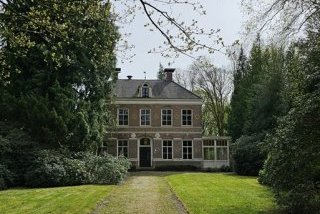
I visited in April 2024 the town of Frederiksoord. I parked my car to the Museum de Proefkolonie which was going through renovations at the time but the museum and its restaurant were fully operational. I decided to skip the museum exhibition but I went to ask help for exploring the town. The staff at the museum were very helpful and provided me with a map of different walking and cycling routes around Frederiksoord and Wilhelminaoord and a small booklet about the history of the free colonies. The staff recommended the green route which was titled "Sterrebosroute" and the route seemed to go around the whole town and all the sights of interest so I decided to follow the recommendation.
The walking routes were well marked so it was easy to follow them. The day was warm and sunny spring day so it was a perfect day for a leisurely stroll. I explored the horticultural school garden which was still quite dead in April but the horticultural school (pictured) next to it was a beautiful building. Across the school is the hotel of Frederiksoord and the old post office which are also both very beautiful buildings. The hotel is still in operation so you can also stay in Frederiksoord if you want. Along the route there were information signs of all the sights of interest both in English and Dutch which was very helpful. The route mostly zigzagged through the Sterrebos forest that was not very interesting except that …
Keep reading 0 comments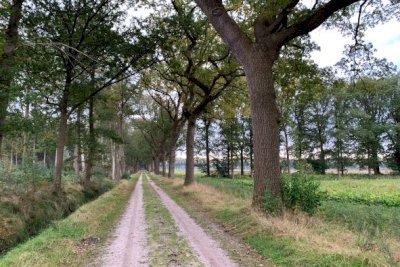
I visited the three component sites in the span of around a month in late summer/early fall 2021. I had good experiences in all three sites and will recount those in this review with my walking and beverage recommendations.
Wortel
We spent a beautiful late summer night camping in the Wortel Kolonie after visiting Gorinchem and Woudrichem (two fortress towns from the 2021 extension of Dutch Water Defense Lines). It's possible to reserve part of the small primitive campsite there managed by the Flemish agency Natuur en Bos. From the parking area we walked the 500 m to the campsite tucked away behind a forested lane (one finds it by walking straight then turning right 90 degrees, thereby appreciating the orthagonal layout so prized in the OUV). Natuur en Bos provides a fire pit and wood and in the morning we were treated with some beautiful light through the trees. After breaking camp and grabbing some pastries at a nearby bakery we returned to the main parking area to begin our walk around the colony. Unlike the other sites, little remains architecturally from the original settlement except for some of the large institutional buildings. The scenery is pleasant enough for walking, however, and our route weaved in and out of cultivated fields, areas that have been reforested, across the Dutch border and back and past the paupers' cemetary. There is a small visitors center above the cafe by the parking lot, but all the text there is in …
Keep reading 0 comments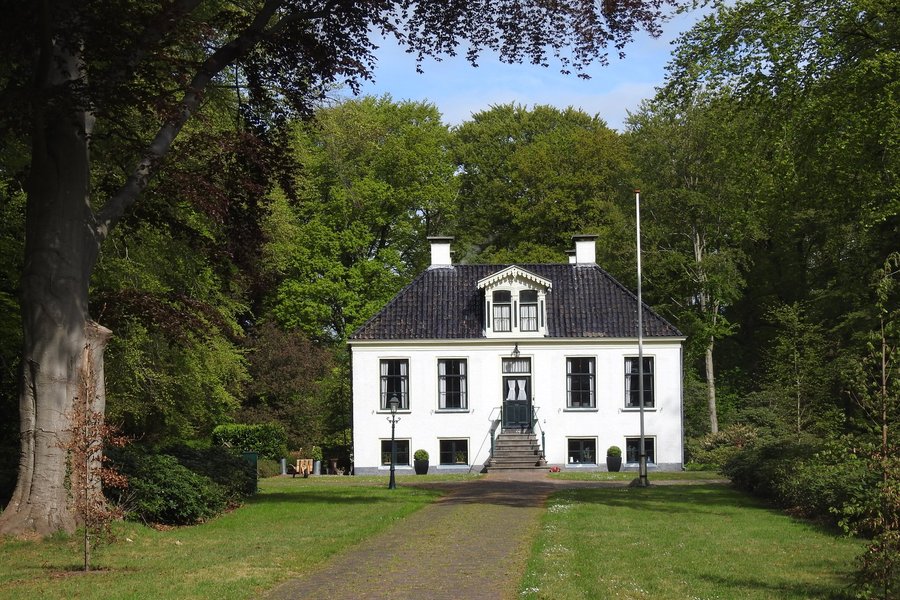
I was in Frederiksoord just two weeks ago. It's certainly not very spectacular to see, but I found the story behind it very interesting. I may be a bit biased because it's part of my own country's history. I do hope that being a WHC will create a broader awareness for this part of our history.
A new visitor centre opened here in 2019. It had to close just a few months later and just reopened now. It tells the story in a modern, audiovisual way. After that, while taking a walk, or better the tramride, through Frederiksoord/ Wilhelminaoord you really get a good feeling for the story. A volunteer on the tram, born here in the final days of the colony, talked about growing up here and told stories about her grant parents etc.
The visitor centre explains all in English, as do many signs in front of a number of buildings. On the tram, the story was told in Dutch, but there were no international visitors (mainly due to the covid situation, I guess). Perhaps, if visitor numbers and tramrides increase, this can/will be done in English as well.
Keep reading 0 comments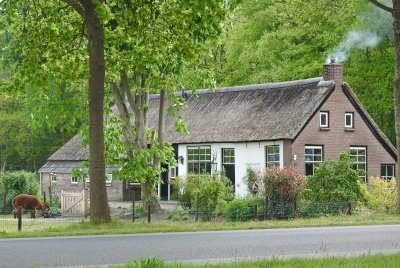
The former Colonies of Benevolence will be on the agenda of the WHC 2020 meeting. This Dutch-Flemish serial transnational proposal had been referred in 2018 due to doubts about the selection of sites included. Subsequential discussions with ICOMOS and the World Heritage Centre, advising to “take a little more time” than usually after a Referral, has led to a reduction of the proposed locations from 7 to 3. On the Dutch side, Ommerschans and Willemsoord are omitted and Frederiksoord and Wilhelminaoord are combined. In Flanders Merksplas has been dropped, leaving only Wortel.
I had already visited the Dutch part (notably Veenhuizen) in 2011 and the Belgian part in 2016. With the full, amended nomination dossier now available I decided to have a closer look at the Frederiksoord-Wilhelminaoord component. It is also about the only (T)WHS related place which I have not reviewed before that I can reach at the moment – I am eagerly awaiting the lifting of the non-essential travel ban to Germany for example, for some more low hanging TWHS fruit.
I arrived early on a Sunday morning in Wilhelminaoord, where I parked my car to begin the 11km long “Monuments walk”. It nicely covers the Frederiksoord-Wilhelminaoord component and its main monuments. They are really prepared here for WH status and more international tourists: every building of some interest has an information panel in front of it. The panels give a comprehensive explanation of what you’re looking at, both in the Dutch and English language. Up …
Keep reading 0 comments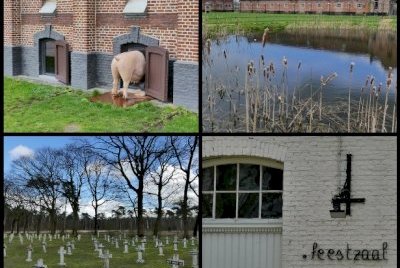
In March 2020 I visited the Belgian locations of this transnational tentative WHS nominated by Belgium and the Netherlands. From a visual point of view, what I experienced was a similar landscape of Beemster or the Par Force hunting landscape with a hint of the Belgian béguinages. The central focus of this tentative nomination is not religious though, it's agriculture.
Around 1818-1825, when Belgium and the Netherlands formed the United Kingdom of the Netherlands, Johannes van den Bosch put forward the idea of fighting poverty with agriculture which gave way to the construction of 7 agricultural colonies. There were so many paupers or vagrants at the beginning of the 19th century, that their size was that of sizeable hamlets or villages with their own chapel or church, pond, cemetery, housing and even their own mint.
The Merksplas colony, the last pauper colony built in 1825, was the only farm in the region to have more than 100 hectares of farm land. It also had a very large pigsty for as much as 95 pigs, which has recently been converted into a free informative visitor centre (top left photo). The various videos in Flemish with English subtitles were fundamental to help give context to the information I read in the nomination dossier. I parked my car for free at the parking lot near the huge church which has been converted in a prison museum. From Merksplas, I headed to my next destination, the Wortel colony built in 1822. On …
Keep reading 0 comments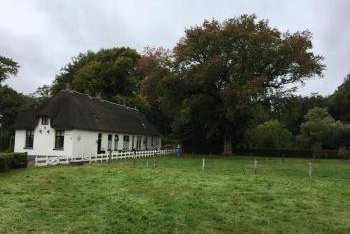
Visited September 2017
If you’re looking for perfect photo opportunities, this is not the sites for you. It is just a countryside. But the value of this nomination lays in its history. I have visited 3 (Frederiksoord, Wilhelminaoord, Willemsoord) of 7 components, all not very far from Steenwijk, the town that can be reached from Amsterdam by train. I think the best way is to start in Frederiksoord (take the bus 19 from the Steenwijk train station) where a small museum is open. The museum itself is a bit disappointing, ‘cos they have only one small building with some expositions, mostly with pictures, but at least you can hear and watch an audio-visual presentation about Johannes van den Bosch and the beginning of the colonies. Another bad thing is that they do sell only Dutch publications and nothing in English. After visiting the museum I made a tour of the first colony – Frederiksoord; it is where everything started. Among others you can see here Westerbeek house, the headquarters of the Society of Benevolence from 1818 till now. (The building itself is older the Society, it was constructed in XVII century for Jean François van Westerbeek, the commander of the fortress in Steenwijk, and then it passed to the van Royen family (silk traders) before being sold to van Bosch.) The other interesting buildings are two schools: forestry and horticultural, Frederiksoord hotel (which was built before the Society’s guests started coming to visit the area) and de Bakkerij (now B&B); …
Keep reading 0 comments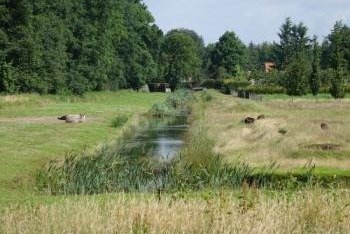
Between 1815 and 1830, the current states of the Netherlands and Belgium were united for a short period in the ‘United Kingdom of the Netherlands’. They are now working on a joint nomination for 2018 to highlight a specific experiment of that era: the efforts of the so-called ‘Society of Benevolence’ to “improve the inhumane conditions suffered by many of the poor”. The Society established domestic colonies to reeducate paupers (tramps, orphans, down-at-heel families) by means of land reclamation and agricultural innovation.
The Dutch part of this nomination covers 6 separate locations in 3 clusters, all in the northeast of the country known at the time as the ‘Dutch Siberia’. I visited most of these already in 2011, when I did a whirlwind summer tour along the sites on the Dutch Tentative List. The best known of the colonies is Veenhuizen, a name tied to its large prison that can hold 1,000 inmates (nowadays filled for 25% with prisoners 'on loan' from Norway by the way). An impressive square former prison building holds the disappointing Prison Museum. Walking around town, the most remarkable sights are the edifying nameplates on the houses of the former guards. They hold slogans like "Order & Discipline" or "Work & Pray".
Last weekend I decided to visit the Belgian part of this nomination. It consists of two locations, Merksplas and Wortel, two villages just south of the Dutch-Belgian border. They’re not as remote as the Dutch sites, but driving along the cobblestoned access avenues does …
Keep reading 0 comments
